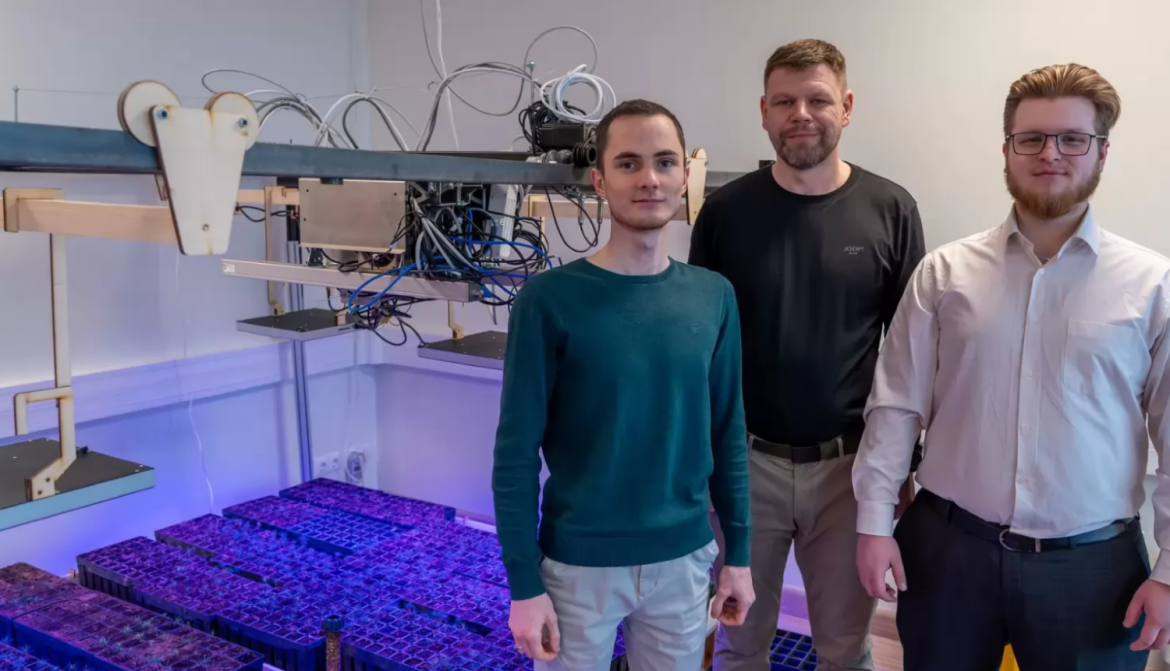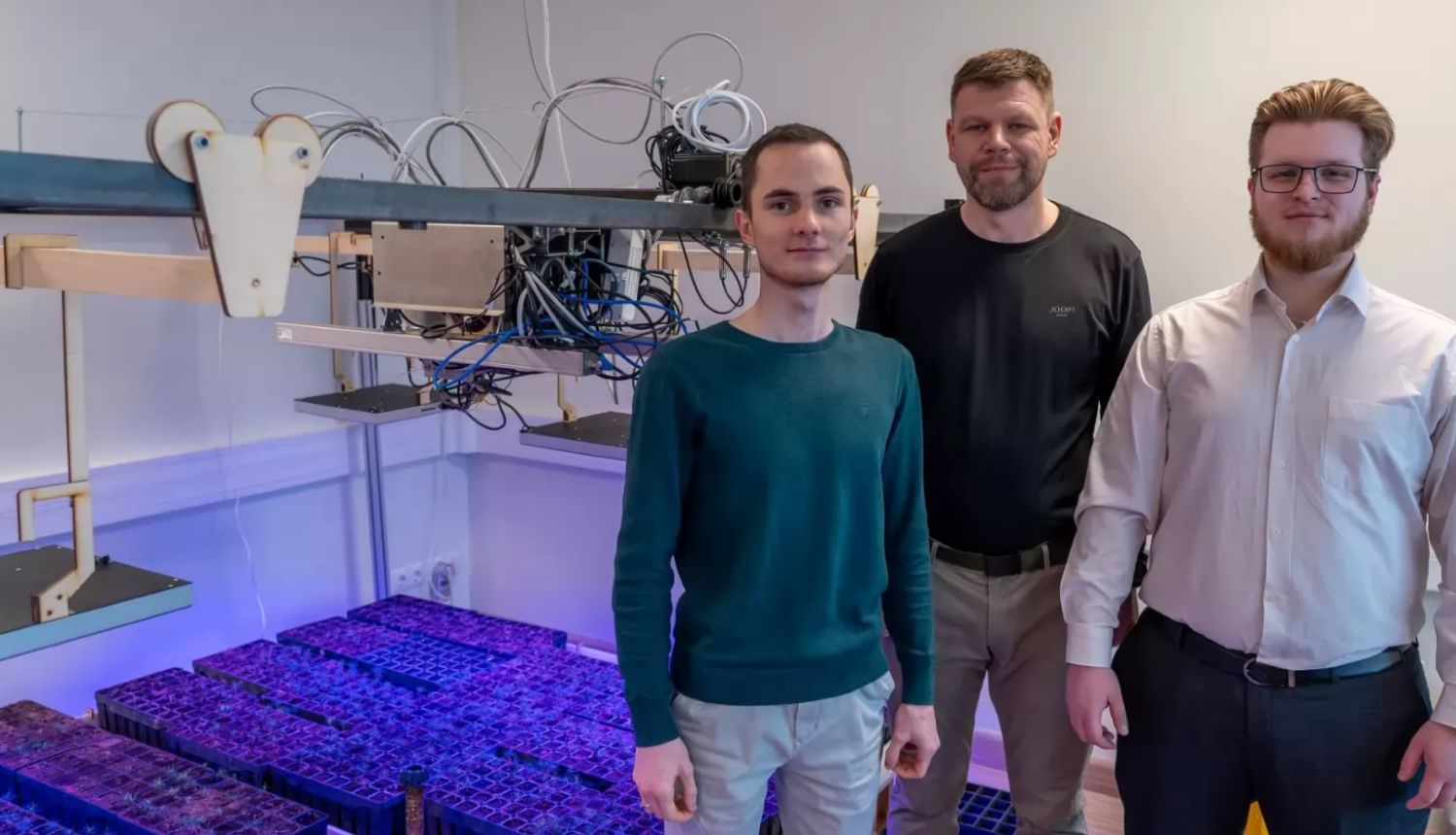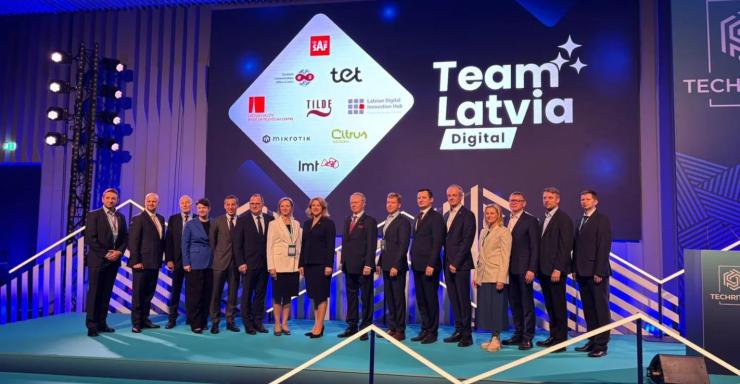At the tree nursery "Norupe" of SIA “Rīgas meži”, the growth of young pine trees is monitored by an automated system that not only tracks seedling germination and growth, but also monitors soil moisture levels, temperature, and weed spread. The system was developed by researchers from the Faculty of Computer Science, Information Technology, and Energy at Riga Technical University (RTU), in collaboration with partners from industry and other research organizations.

Photo: Armands Kaņepe, RTU
In one of the greenhouses at "Norupe", which is 80 meters long and 14 meters wide, an automated monitoring system integrated with an irrigation system has been installed. The greenhouse houses over 350,000 young pine seedlings – just a few centimeters tall – which the monitoring system regularly scans. Scanning the greenhouse takes 10 to 12 hours, capturing up to 100 images per second. These images are analyzed using computer vision and artificial intelligence methods, and the resulting data is transferred to a Geographic Information System (GIS) for spatial visualization and planning of future greenhouse operations.
The system provides information on the condition of the seedlings, such as whether the pines have germinated, whether there are any anomalies – such as empty trays, multiple seedlings in one tray, or irregular vegetation – as well as data on weed distribution, surface temperature of the substrate and seedlings, moisture levels, irrigation regime, and climate control impacts. This enables nursery staff to make data-driven decisions to ensure that the young plants grow as strong as possible. The stronger the seedlings, the better the future forest stands will resist diseases, pests, and climate change impacts. Reforesting with high-quality new plantings is essential for the sustainable management of renewable resources.
"Having access to such data will allow for more efficient management of financial and human resources, as well as for insights that are not immediately visible to the naked eye or would otherwise be extremely costly. The role of precision forestry will continue to grow, automating processes and reducing the need for manual labor. Humans will play an irreplaceable role in decision-making and supervision," emphasizes Andrejs Zujevs, lead researcher at RTU’s Institute of Applied Computer Systems within the Faculty of Computer Science, Information Technology, and Energy. He leads the Precision Forestry research group at RTU.
Currently, record-keeping for weeding, fertilizing, watering, and plant protection treatments at nurseries is done manually and requires significant human involvement. The newly developed technology will increase nursery productivity, directly aligning with one of the strategic goals of Latvia's forestry sector – to significantly increase added value per job.
RTU researchers developed software for recording visual data of seedlings (the dataset used to train the neural network consisted of over 100,000 images stored at RTU’s High-Performance Computing Center), as well as software for detecting plant health issues, anomalies, weeds, determining soil relative humidity, remotely configuring and managing sensors, and transmitting processed data results to the GIS. Hardware development was carried out in cooperation with colleagues from the Latvia University of Life Sciences and Technologies, with the involvement of SIA “Rīgas meži”, the farm “Pasakas”, SIA “Energouzraugs”, and the association “Mežvidi Agricultural and Technology Park”.
A. Zujevs sees a broad range of applications for the automated system as it continues to be developed. It could be used not only for planning staff workload and availability, more accurate production forecasting, and optimizing irrigation and climate control regimes, but also for analyzing tree seedling morphology and physiology, monitoring their life cycle up to planting in the forest, studying seed germination, and even for robotic weeding and removal of double seedlings. RTU’s Precision Forestry research group's latest project focuses specifically on developing a weeding robot capable of recognizing and removing weeds.
The project “Development of an Automated System for Monitoring Tree Nursery Seedling Growth, Health, and Overgrowth” (Project No. 23-00-A01612-000002) was implemented with the support of the Rural Support Service and the Ministry of Agriculture, and funded by the European Agricultural Fund for Rural Development.



